Helping children remain calm through difficult emotions
Anxiety
Many young children have difficulty regulating their emotions. What adults may witness and describe as tantrums, outbursts, whining, defiance, fighting, are all behaviours you see when children experience powerful feelings they can’t control. In the current climate and with yet more change ahead, we may begin to see these behaviours in our settings and the family home more than before, while children struggle to manage big emotions. Here is a quick guide with some ideas of how to manage this and contain the emotions.
One of the prevalent emotions around in our current climate in both children and adults is that of anxiety. Anxiety can be pictorially represented as below:
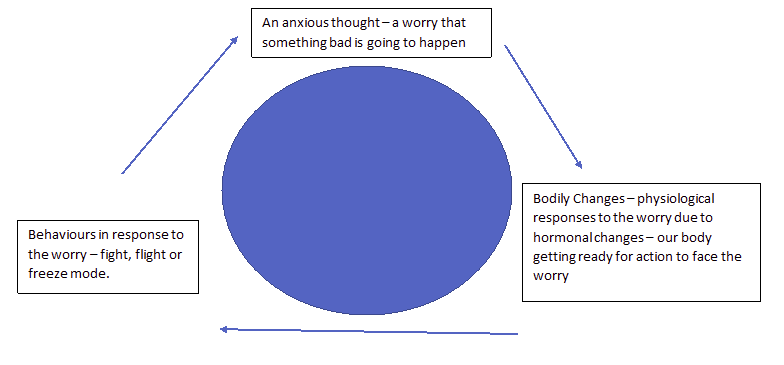
When children experience anxiety or a worry around something, the following may occur in their bodily changes.
Common Physical Symptoms of Anxiety in Children
Headaches
Tummy aches
Nausea and/or vomiting
Shaking
Dizziness
Sweating
Fast heartbeat
Breathing quickly Tingling
Dry/tight throat
Tight muscles
Sometimes adults may think that children are “making these symptoms up” to get out of something, but there is much scientific evidence to prove that these symptoms are very real physiological responses to stress. They can become problematic if children get into a cycle of focussing on the unpleasant physical symptoms and then they increase therefore the anxious feeling increases.
Children can have a visual of all of these symptoms in order that they can see what is happening to their bodies and communicate. This could be created for or with them depending on their emotional maturity and physical awareness. I highly suggest Boardmaker as a tool for making symbols for children particularly those that are very visual. It is widely used for children with ASN and is a recognised and universal method of using symbols that are easy to understand by young children.
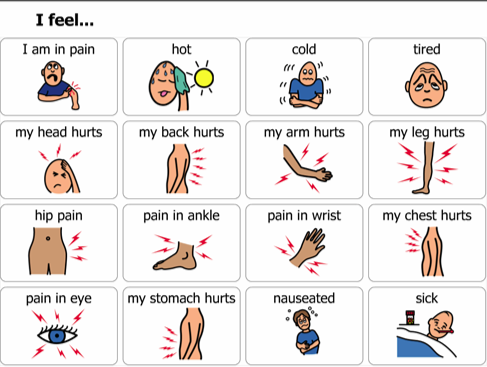
“In the Moment” Relaxation Strategies
When children are experiencing these unpleasant bodily changes, we as adults can guide them to managing them in order that they can understand their emotions and deal with
them in a positive way. I have outlined some examples below of dealing with the symptoms “in the moment” when you may not have resources to hand and children may be in fight/flight/freeze mode – using only the reactionary part of their brains.
Breaking the Cycle
In order to break the vicious cycle, we can try to not give too much attention to the physical symptoms. So try saying something like “So you feel your heart moving fast, that can’t be very nice……..” then move on and distract by playing a game, doing an activity together, or getting them to help you out.
Shifting the focus
For some children, they may already be further into the cycle of worrying about their physical symptoms and it may be more difficult to distract them. We can talk these children through focussing on their immediate surroundings. For example, notice all the different colours around them, sounds or even textures. Keep it short so they can keep paying attention. With practice children will become stronger at focusing their attention away from their uncomfortable physical symptoms. This is mindfulness used to bring back children from fight/flight/freeze.
Breathing
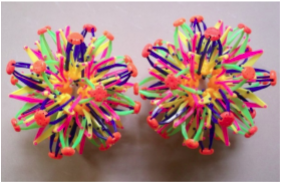
The Hoberman Sphere
The Hoberman Sphere is a lovely visual aid for breathing that can be picked up cheaply online or in toy shops. It works to visually demonstrate the lungs expanding as we breath in and contracting as we breath out and so when played with children can help them understand how to calm and slow their breaths. Be aware of the following if you are demonstrating as it is not appropriate to slow the breath of a young child to that of an adult due to physiological differences.
An alternative would be for the children to use it to breath at their own pace and slow to a pace suited to them.
The Breathing Ball is a great attention getter, but you risk creating frustration in children if you don’t choose an age appropriate pace.
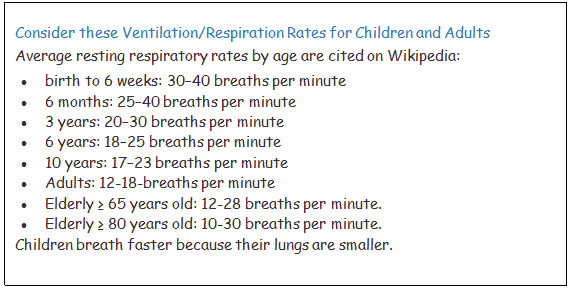
Blowing bubbles can also be a good way to regulate breaths by encouraging slow/deep breathing. I carried a bum bag around with this and some malleable resources at all times when working with a child with anxiety so that I had these to hand when things got hard for that child.
Structured Resources and Activities to Promote Calm environments
Some children may not be receptive yet to what we see as “structured” experiences of yoga or mindfulness and this is OK. You must know your children and be responsive and the above can help in a less structured way when children need it. We can also model as adults how to regulate ourselves in times of stress and anxiety and this has a huge effect on teaching children and allowing them to develop their own regulation system. However, there are children that can benefit from a regular practices that may help to prevent anxious episodes occurring and build their own internal regulation systems.
Story based relaxation using yoga poses as calming techniques
For children that are interested, a regular yoga practice can really benefit them by allowing them a safe space to gain a greater bodily awareness which can help to tune into emotions and associated physical feelings and it also teaches breathing techniques that can aid in emotional reguklation. A good way I have found is through yoga stories, I have posted some of my favourites below. All can be found on amazon but alternatively I have posted author read youtube videos that can be watched without purchasing the book.

There are also some lovely stories which deal with emotions in young children. I have posted these below along with author readings.
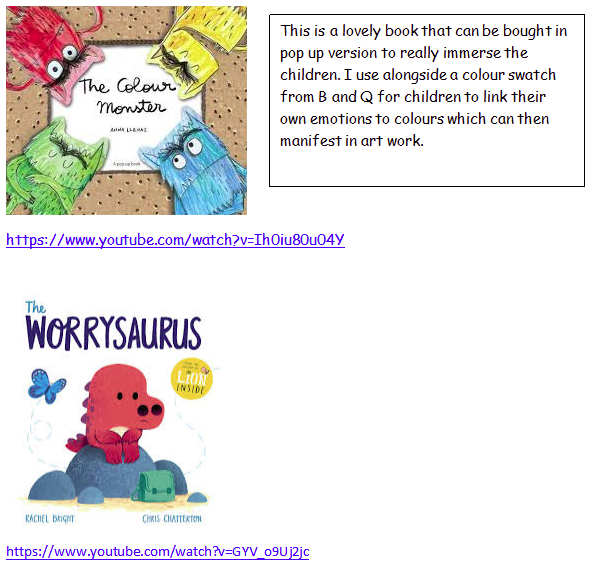
https://www.youtube.com/watch?v=Ih0iu80u04Y
Blog Created after reading:
Helping with Child’s Fears and Worries: A Self-Help Guide for Parents, Cathy Cresswell and Lucy Willetts
Mindfulness for Parents: Amber Hatch
Playful Parenting: Laurence J Cohen
Blog written by Emma Williamson.

